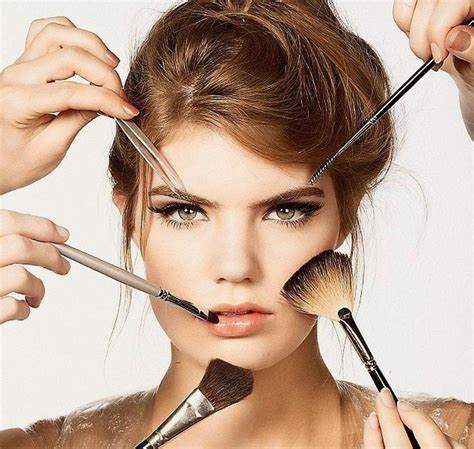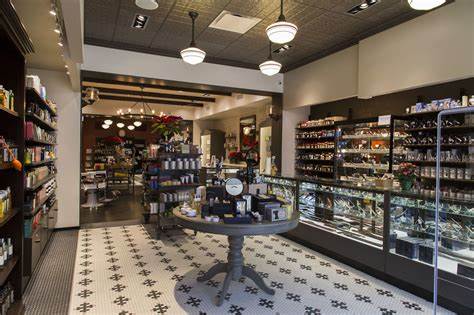In a society obsessed with fair skin, Eurocentric features, and unrealistic beauty standards, Filipino women have long been subjected to toxic beauty norms. But it’s high time we dismantle these harmful ideals and embrace our own unique beauty. This article delves deep into the reasons why it’s crucial to break down toxic Filipino beauty standards and pave the way for a more inclusive and accepting society.
For decades, Filipino women have been bombarded with messages that dictate what beauty should look like – light skin, pointed noses, and slim figures. These standards perpetuate an unattainable and damaging ideal, undermining the self-esteem and confidence of countless individuals. However, a growing movement is urging us to challenge these norms, celebrating our diverse and authentic beauty.
By examining the historical, cultural, and social aspects that have contributed to toxic beauty standards in the Philippines, we can start to address the root causes of this damaging mindset. Through education and representation, we can empower Filipino women to embrace their natural beauty and redefine what it means to be beautiful.
Join us as we explore the impactful journey towards breaking down toxic Filipino beauty standards, and discover why it’s time to embrace diversity, self-love, and inclusivity.
Contents
The Impact of Toxic Beauty Standards on Filipino Individuals
Toxic beauty standards in the Philippines have had a profound impact on the self-image and mental well-being of countless Filipino individuals. From a young age, many are bombarded with images of fair-skinned celebrities and models who are held up as the epitome of beauty. This constant exposure to unattainable beauty ideals can lead to feelings of inadequacy, low self-esteem, and even self-hatred.
Young girls, in particular, are vulnerable to the damaging effects of these standards. They grow up internalizing the notion that fair skin and Eurocentric features are superior, and that their own natural beauty falls short. This can result in a never-ending pursuit of unattainable beauty, as individuals resort to skin whitening products, undergo cosmetic procedures, or engage in harmful dieting practices.
The impact of toxic beauty standards is not limited to women alone. Filipino men are also affected, as societal expectations place emphasis on physical appearance and conforming to a certain ideal. This pressure can lead to body dysmorphia, eating disorders, and a sense of inadequacy that impacts their overall well-being.
It is crucial to recognize that these Filipino beauty standards male are social constructs, influenced by colonial history, media, and societal pressures. By understanding the root causes of these toxic standards, we can begin to dismantle them and create a more inclusive and accepting society.
The Historical Roots of Filipino Beauty Standards
To fully understand the toxic beauty standards that exist in the Philippines today, it is important to explore their historical roots. These standards can be traced back to the country’s colonial history, particularly the Spanish and American influences.
During the Spanish colonial era, the notion of “mestizaje” emerged, which promoted the superiority of mixed-race individuals with lighter skin and European features. This ideology laid the foundation for the belief that fair skin equates to beauty and social status. The Spanish colonizers perpetuated the idea that indigenous features were inferior and needed to be eradicated or altered.
Fast forward to the American occupation of the Philippines, and a new set of beauty standards emerged. The introduction of Hollywood and Western media further reinforced the belief that fair skin and Eurocentric features were the epitome of beauty. This led to a shift in societal preferences, with a clear bias towards those who fit this Western ideal.
These historical influences, combined with the media’s obsession with fair-skinned celebrities and models, have cemented these toxic beauty standards in Filipino society. It is crucial to recognize and challenge these historical roots in order to break free from their damaging effects.
Breaking Down Common Beauty Standards in the Philippines
In order to break down toxic beauty standards, it is important to identify and challenge the specific ideals that have been ingrained in Filipino society. Some of the common beauty standards include:
- Fair skin: Fair skin has long been associated with beauty and social status in the Philippines. This preference for lighter skin perpetuates the belief that those with darker skin tones are less desirable or beautiful. This bias is deeply rooted in colonization and the idea that Western features are superior.
- Eurocentric features: The glorification of Eurocentric features, such as high noses, double eyelids, and sharp jawlines, has created a narrow definition of beauty in the Philippines. This standard excludes those who do not naturally possess these features, leading to feelings of inadequacy and a sense of not belonging.
- Slim figures: The obsession with slim figures has led to a culture of body shaming and the promotion of unhealthy dieting practices. Many Filipino individuals feel the need to conform to a specific body type, often resorting to extreme measures to achieve it.
By understanding and challenging these beauty standards, we can begin to pave the way for a more inclusive and accepting society that celebrates the diverse beauty of Filipino individuals.
The Harmful Effects of Toxic Beauty Standards
The harmful effects of toxic beauty standards cannot be overstated. They permeate every aspect of an individual’s life, from their self-image to their relationships and overall well-being. Some of the detrimental effects include:
- Low self-esteem: Constant exposure to unattainable beauty ideals can lead to feelings of inadequacy and low self-esteem. Filipino individuals who do not fit the prescribed beauty standards may develop a negative self-image and struggle with self-acceptance.
- Mental health issues: The pressure to conform to societal beauty standards can contribute to mental health issues such as anxiety, depression, and body dysmorphia. The constant comparison to unrealistic ideals takes a toll on one’s mental well-being and can lead to a cycle of self-criticism and self-hatred.
- Limited opportunities: The preference for fair-skinned individuals and Eurocentric features can result in limited opportunities, particularly in industries such as entertainment and modeling. This perpetuates a narrow definition of beauty and hinders the progress of inclusivity and diversity.
It is crucial to recognize the harmful effects of toxic beauty standards and take steps towards dismantling them in order to create a society that values and celebrates the authentic beauty of all individuals.
The Importance of Embracing Diversity and Inclusivity in Beauty
Embracing diversity and inclusivity in beauty is not only essential for the well-being of individuals, but also for the overall progress of society. By celebrating and accepting diverse beauty, we can create a more inclusive and accepting environment where everyone feels valued and represented.
Beauty should not be limited to a specific set of physical attributes. It should encompass the unique features, backgrounds, and experiences that make each individual beautiful in their own right. By embracing diversity, we can challenge the narrow beauty standards that have been imposed on us and redefine what it means to be beautiful.
Representation plays a crucial role in this journey towards inclusivity. By showcasing a diverse range of beauty in media, advertising, and other platforms, we can break down stereotypes and foster a more inclusive society. This representation should go beyond tokenism and superficial diversity, and truly reflect the rich tapestry of Filipino beauty.
Education also plays a vital role in dismantling toxic beauty standards. By promoting body positivity, self-love, and the celebration of diverse beauty in schools and communities, we can empower individuals to embrace their natural beauty and reject the damaging ideals that have been imposed upon them.
Challenging societal norms and redefining beauty in the Philippines
Breaking down toxic beauty standards requires a collective effort to challenge societal norms and reshape the perception of beauty in the Philippines. Here are some steps we can take towards this goal:
- Education and awareness: It is important to educate ourselves and others about the harmful effects of toxic beauty standards and the importance of embracing diversity. By raising awareness, we can challenge existing norms and promote a more inclusive understanding of beauty.
- Media representation: Media plays a powerful role in shaping societal perceptions of beauty. By demanding more diverse representation in media, we can challenge the narrow beauty standards that have been perpetuated for so long. This includes advocating for more representation of individuals with different skin tones, body types, and features.
- Self-acceptance and self-love: Embracing our own unique beauty starts with self-acceptance and self-love. It is important to embrace and celebrate our individuality, recognizing that beauty comes in all forms. By practicing self-care and nurturing a positive self-image, we can inspire others to do the same.
- Support and uplift others: Breaking down toxic beauty standards requires collective support and uplifting of others. By celebrating and complimenting the beauty of others, regardless of their adherence to societal standards, we can create a culture of inclusivity and acceptance.
In conclusion, it is high time we break down toxic Filipino beauty standards and embrace diversity, self-love, and inclusivity. The impact of these toxic standards on Filipino individuals is undeniable, but with education, representation, and a shift in societal norms, we can pave the way for a more accepting and inclusive society. It is time to celebrate our authentic beauty and redefine what it means to be beautiful in the Philippines.



